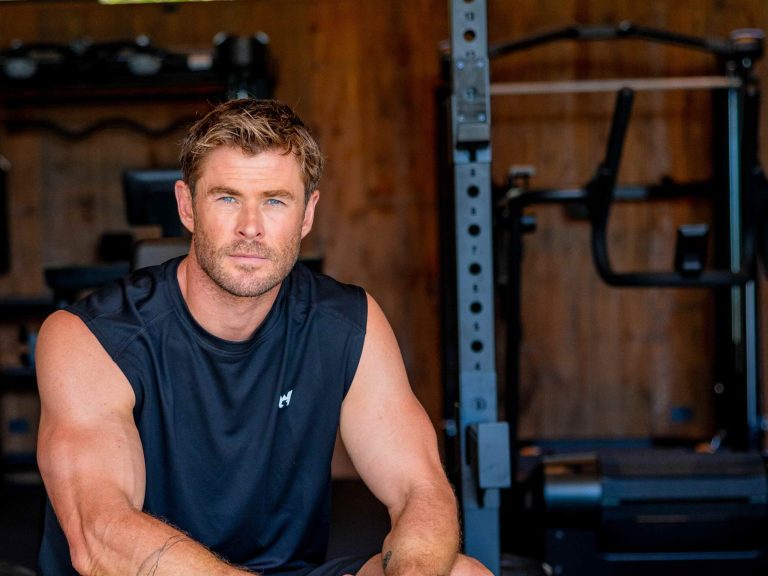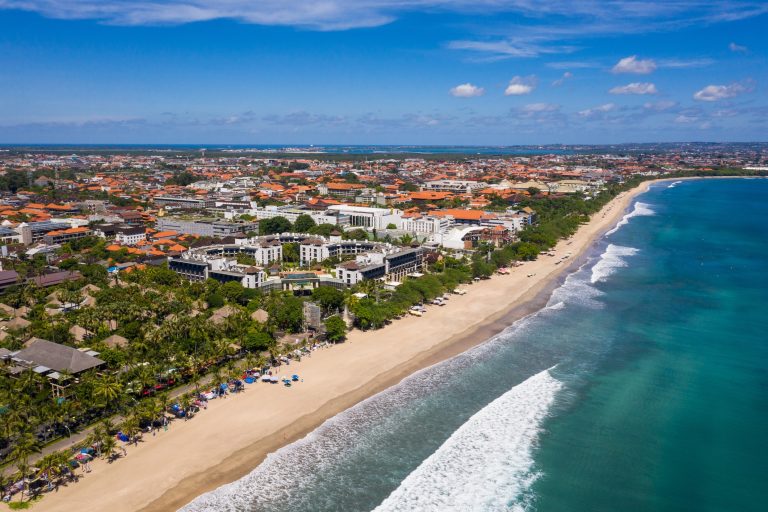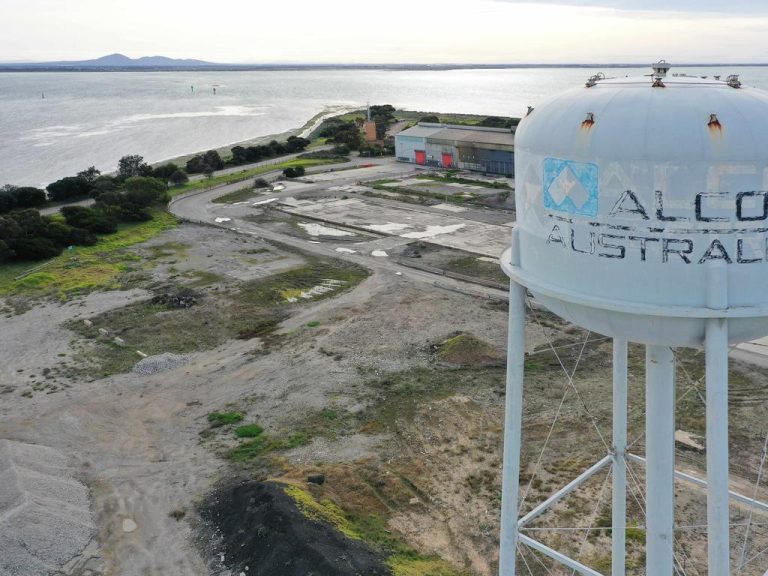Outdoor dining the new norm for Australian hospitality businesses

Due to COVID-19 restrictions, many Australian hospitality businesses have adapted their venues to meet COVID-safe requirements, shifting operations outdoors where there is a lower risk of virus transmission.
The most recent COVID-safe guidelines for hospitality venues in Victoria permit just 40 people in indoor settings while 70 people are allowed to be seated outside. This has forced many businesses to transform outdoor spaces, such as car parks and storage spots, into alfresco dining areas.
Simon Denman who owns popular Melbourne restaurant Old Palm Liquor is one of the business owners adopting a strong outdoor dining game in order to welcome more patrons, expanding his restaurant’s outdoor courtyard.
“It was always something we had planned to do, but with the announcement that we could [have more people] outdoors under COVID restrictions meant that we rushed it through ready for the reopening of Melbourne,” said Mr Denman.
“[It was] a fairly organic process. We looked at what was already there and added in what felt like was missing, choosing to stick with recycled red bricks for paving to match the existing building and adding in lots of plants.”
The new outdoor space at Old Palm Liquor seats 65 people under current social distancing rules while 20 patrons are allowed indoors.
After nearly four months of being unable to host customers, Mr Denman said he was excited to begin operations again, despite running at a smaller capacity.

Old Palm Liquor is a popular venue in Melbourne, which expanded outdoor dining to adhere to COVID-19 restrictions. Picture: Supplied
“It is great to be reopen, it could not have come sooner. Though we have been trading as a bottle shop and food/wine delivery service throughout lockdown, it does not compare to the joy of seeing the building full of people again,” he said.
Government incentives not enough to cover new set ups
Government incentives have been put in place during COVID to help keep hospitality businesses alive, including JobKeeper payments and commercial rent relief packages.
In Victoria, which has been hardest hit with lockdown rules, hospitality business owners had access to the Hospitality Business Grant Program, the Night-time Economy Business Support Initiative and Licensed Hospitality Venue Fund. The latest is the Outdoor Eating and Entertainment Package, which gives eligible businesses a $5,000 grant to set up their outdoor dining space.
However, Mr Denman said the grants haven’t gone far enough.
The transformation of the outdoor dining space at Old Palm Liquor didn’t simply involve adding outdoor furniture. Previously, it was a dirt garden that was used as a nursery by the shopfront next door. Mr Denman had to knock down a hole through a brick wall between the two properties to create a doorway, then pour a reinforced concrete slab with plumbing and drainage channels and pave the space with old red bricks. Finally, he had to build a 4 metre-high acoustic barrier to avoid complaints from neighbours.
“The grant money received is always welcome, though the extent of works [to increase outdoor dining space] far exceeded what was given…The $5k did not even cover the 10 trestle-style tables we bought. On top of that there was the cost of creating a space that people would like to dine in,” Mr Denman said.
“[But] in our case we are investing in [outdoor dining] as a permanent addition to the venue, as such we have spent a significant amount more than the government grant,” he added.
The emergence of outdoor dining precincts
Cafe and restaurant strips across Victoria and New South Wales are also moving towards increased outdoor dining capacity, in some cases applying for permits to take up street parking bays. This has been inspired by outdoor dining plans in New York and London.
The City of Melbourne announced six different precincts where dining will be permitted on the streets without permit fees. These include Bourke Street East and Russell Street in the CBD, Lygon Street in Carlton, Errol Street in North Melbourne, Domain Road in South Yarra and Bellair Street in Kensington.
Stonnington Council has also initiated more outdoor dining precincts. Popular Greville Street in Prahran and Beatty Avenue in Armadale are now closed to traffic to allow restaurant seating to spill onto the streets.
Chapel Street Precinct Association general manager Chrissie Maus said she “got emotional” when she first saw people dining outdoors after what businesses have endured during the pandemic.
“Supporting local right now is so important so [businesses] can start getting on top of debt,” said Ms Maus.
The City of Sydney is currently working with the state government to create more options for alfresco dining across Sydney.
At the moment, hospitality venues in Sydney can allow one person for every two square metres in outdoor areas, which was previously one person for ever four square metres.
A new 12-month outdoor dining pilot, including cuts to outdoor dining permit fees, will see laneway dining come to life.
Sydney Lord Mayor Clover Moore said the outdoor dining pilot is a forward-thinking plan.
“By removing fees and red tape and working with businesses to find as many outdoor dining opportunities as possible, we’re supporting COVID-recovery while realising our vision of an alfresco city,” Ms Moore said.
“We need to allow and encourage businesses to operate outdoors, and we need to support our creative and cultural life to activate and draw people back to our city, safely. We want to ensure our city businesses survive and create new opportunities to thrive in the long term.
“Having brunch with friends, a wine after work or grabbing a quick bite and watching the world go by are some of the best moments of urban life.
“Encouraging outdoor dining makes it easier for us to enjoy those things and support local businesses while maintaining a safe physical distance.”
The plan will see high streets, laneways, parking bays and footpaths transformed including Pitt Street, Barrack and Crown Streets and Tankstream and Wilmot Lanes.
The future of dining
Without a COVID-19 vaccine, restrictions on dining will continue to be in place, which means outdoor dining will likely be the new norm.
Some business owners are planning ahead and already re-shaping what dining during COVID looks like.
Bruce Keebaugh, co-founder of catering company The Big Group, recently opened The Commons on St Kilda Road in Melbourne, previously Belgian Beer Gardens.
The largely outdoor area consists of four areas: The Conservatory; The Kitchen Garden; The Garden Cafe and The Beer Garden. There’s even a playpen for pooches.
Each table setting adheres to Victoria’s 1.5m social distancing rule and the venue can seat the maximum 70 people outside and 40 within The Conservatory, which is indoors.
“After living in our homes and not being able to get out, I wanted it to be a place, like the people’s local park in London, where you can just go to The Commons,” said Mr Keebaugh.
Mr Keebaugh said that the design of the space is meant to feel as though patrons aren’t socially distanced, which was done through garden bed separators, the use of different furniture settings throughout and seamless barriers.
With a strong background in catering, Mr Keebaugh said he was used to adhering to strict design rules when putting on an event and treated opening The Commons in a similar fashion. But he believes other venues are bound to struggle.
“Social distancing, the six COVID principles … they are all just current state of play. In the events industry you’ll always have a parameter of what you can and can’t do. From a design intent perspective, we’ve done everything here to fit within the COVID principle of the 1.5m social distancing rule,” he said.
“It’s really easy to say ‘restaurant X you need to become restaurant Y tomorrow’, but the menu, the staffing model and the design don’t necessarily correlate with that … it’s definitely not as simple as it looks.”
It’s not just the design that venues will need to adapt to in a COVID-safe world, there are also new health and safety regulations including the mandatory wearing of face masks for staff and patrons (when they are not seated at a table) and the use of hand sanitiser.
Signing into a venue via a QR code (a requirement in Victoria, New South Wales, ACT, South Australia and Queensland) and ordering from an online platform are already common practice in many hospitality venues.









